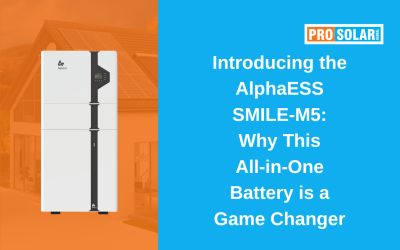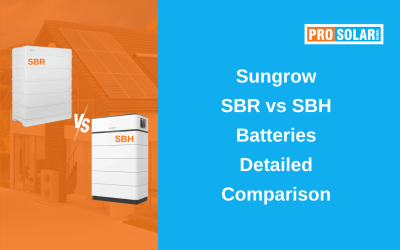Can solar panels really work during cloudy days and winter months? Let’s break down the facts.
When most Australians think of solar power, they picture a blazing summer sun. But what happens to your solar panels when the skies turn grey, or temperatures drop in winter?
The answer is simple: solar panels still work surprisingly well — even in low-light conditions.
In this guide, we’ll cover everything you need to know about solar panel performance during cloudy days and winter months. Whether you’re considering solar or already have a system, this blog will help you understand how to make the most of your investment year-round.
Do Solar Panels Work on Cloudy Days?
Yes, they absolutely do.
Solar panels generate electricity by capturing sunlight, not heat. Even on overcast days, a good amount of sunlight still filters through the clouds. This diffused light can still be converted into electricity.
Quick Fact:
On a heavily overcast day, your panels might produce around 10%–30% of their normal output, but on partly cloudy days, they may still hit 50%–70%.
What Affects Low-Light Performance?
There are several key factors that affect how well your solar panels perform in less-than-perfect conditions:
1. Panel Quality & Technology
High-efficiency panels (like monocrystalline types) typically perform better in low-light conditions. Brands like REC, SunPower, Trina, and Canadian Solar are known for strong low-light output.
Some premium panels also feature anti-reflective coatings, half-cut cell technology, and PERC (Passivated Emitter and Rear Contact) innovations that boost performance even when sunlight is limited.
2. Inverter Efficiency
Even if your panels collect energy, the inverter needs to convert it to usable electricity. A high-quality inverter (like Fronius, SMA, or Huawei) ensures minimal energy loss — especially when solar input is low.
3. System Design & Orientation
Systems that are well-designed for your roof pitch and local conditions will always do better during winter and cloudy weather. North-facing panels (in Australia) receive the most consistent sunlight throughout the year.
What About Winter Solar Performance in Australia?
Winter brings shorter days and a lower sun angle, but many Aussies are surprised to find that solar can still be very effective in winter — especially in sunny states like Queensland, NSW, and parts of WA.
In fact, solar panels perform more efficiently in cooler temperatures. While output may drop due to shorter daylight hours, the cooler air improves conductivity, meaning your system can work better when it’s not overheating.
Winter Solar Tip:
Make sure your panels are clear of debris or shading, and trim overgrown trees that might block precious winter sunlight.
Average Solar Production in Winter vs Summer (Example – Sydney)
| Month | Avg Daily Solar Output (5kW system) |
| January | 21 – 23 kWh |
| July | 10 – 12 kWh |
Even in winter, you’re still generating enough electricity to cover basic household needs or offset part of your bill. The key is to match your usage habits with production times.
How to Optimise Solar Output in Low-Light Conditions
Here are five simple ways to ensure your system performs well even when the weather isn’t ideal:
- Install high-efficiency panels – not all panels are equal in dim light.
- Use a quality inverter – poor-quality inverters waste valuable low-light energy.
- Consider adding a battery – store excess energy on sunny days to use on cloudy ones.
- Regular maintenance – clean panels produce more power, especially during dusty winter months.
- Smart monitoring – track system performance in real-time to catch any drops in output.
Bonus: Do Solar Batteries Help in Low-Light Conditions?
Absolutely. A solar battery stores surplus energy produced during sunnier periods and makes it available during overcast days or at night. This not only helps keep your lights on but also reduces your reliance on the grid during low-production times.
Batteries are especially useful during winter months, when daylight hours are shorter and demand for heating increases.
Should You Still Invest in Solar If You Live in a Cloudy Area?
Yes — even areas with frequent cloud cover like Melbourne or Hobart still receive enough sunlight for solar to be worthwhile. Modern systems are designed to maximise output in all weather conditions, and incentives like the STC rebate and state-level schemes make the payback period shorter.
Real-World Example: Solar System in Melbourne
5kW solar system with a premium inverter & monocrystalline panels
- Average summer output: 20 kWh/day
- Average winter output: 9 kWh/day
- Estimated annual savings: $1,100 – $1,500
Even with cloudy days and winter dips, the year-round benefits remain strong — especially if you size your system to suit your usage.
Final Thoughts: Embrace Solar Confidence, Rain or Shine
Don’t let grey skies stop you from going solar. Today’s systems are built to perform well across all seasons, and with the right setup, you can enjoy consistent savings year-round.
Cloudy days and cooler weather are no longer barriers to solar success. With proper system design, high-quality components, and maybe even a battery, your solar setup can thrive in low-light conditions.
Talk to Our Expert Today
Want to learn how your home can benefit from solar — even in cloudy conditions? Call us now on 1300 181 191 and get expert advice tailored to your location, roof, and budget.




